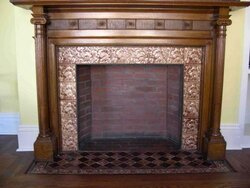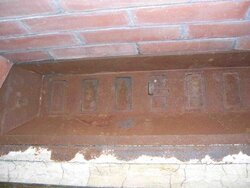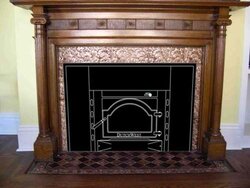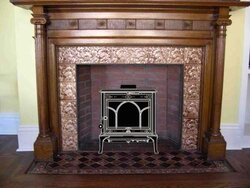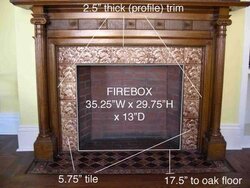This is a post that began in another thread but it was suggested I start a new thread rather than piggy-back on someone elses.
I am new to the community but have been reading with great interest for many months.
I am in the market for a wood burning insert for a small Victorian fireplace in Providence. (see photo 1)
(12” deep, 35 1/4” wide at the front, 28 1/2” wide at the back, 29 3/4” high at the front, 35 1/2” high from hearth tile to mantle trim)
1. The only wood burning inserts I can find that work with this depth are the Dutchwest 2500X01 and the Century EPA CJW2500X02, both from Vermont Castings. Any others that could work with a 12" deep firebox?
I went to a local dealer and he said that, in fact, Vermont Castings doesn't make either one of these and that they are now made by some company in Canada.
2. The chimneys are in poor shape, original to the 1889 house, mortar in the attic is like butter after years of water leaks. I assume i’ll need a liner and that I will need to do some repointing and repairs where I can in the attic and above the roofline. There are 2 unused flues, both 8"x8" square, brick only, no tiles. From what I have read, I don't think I can fit a 6" insulated liner in the flue as the outside dimensions of these are at least 8". Will an uninsulated stainless chimney pipe suffice given the relativley poor condition of the chimney? It is an interior chimney.
3. Photo 2 shows the interior top of the fireplace, I guess it’s called the damper, with a handle that slides sideways to open the rectangular holes.
The metal measures 8” from front to back so I think it could accommodate a 6” chimney, but it seems like this thing is cast iron/heavy/solid, like we’re going to need an oxy-acetylene torch to cut a hole in it. Any one seen this predicament before?
Your input is greatly appreciated, and any RI folks out there who have local installer connections/suggestions/dealers would be helpful.
I am new to the community but have been reading with great interest for many months.
I am in the market for a wood burning insert for a small Victorian fireplace in Providence. (see photo 1)
(12” deep, 35 1/4” wide at the front, 28 1/2” wide at the back, 29 3/4” high at the front, 35 1/2” high from hearth tile to mantle trim)
1. The only wood burning inserts I can find that work with this depth are the Dutchwest 2500X01 and the Century EPA CJW2500X02, both from Vermont Castings. Any others that could work with a 12" deep firebox?
I went to a local dealer and he said that, in fact, Vermont Castings doesn't make either one of these and that they are now made by some company in Canada.
2. The chimneys are in poor shape, original to the 1889 house, mortar in the attic is like butter after years of water leaks. I assume i’ll need a liner and that I will need to do some repointing and repairs where I can in the attic and above the roofline. There are 2 unused flues, both 8"x8" square, brick only, no tiles. From what I have read, I don't think I can fit a 6" insulated liner in the flue as the outside dimensions of these are at least 8". Will an uninsulated stainless chimney pipe suffice given the relativley poor condition of the chimney? It is an interior chimney.
3. Photo 2 shows the interior top of the fireplace, I guess it’s called the damper, with a handle that slides sideways to open the rectangular holes.
The metal measures 8” from front to back so I think it could accommodate a 6” chimney, but it seems like this thing is cast iron/heavy/solid, like we’re going to need an oxy-acetylene torch to cut a hole in it. Any one seen this predicament before?
Your input is greatly appreciated, and any RI folks out there who have local installer connections/suggestions/dealers would be helpful.


